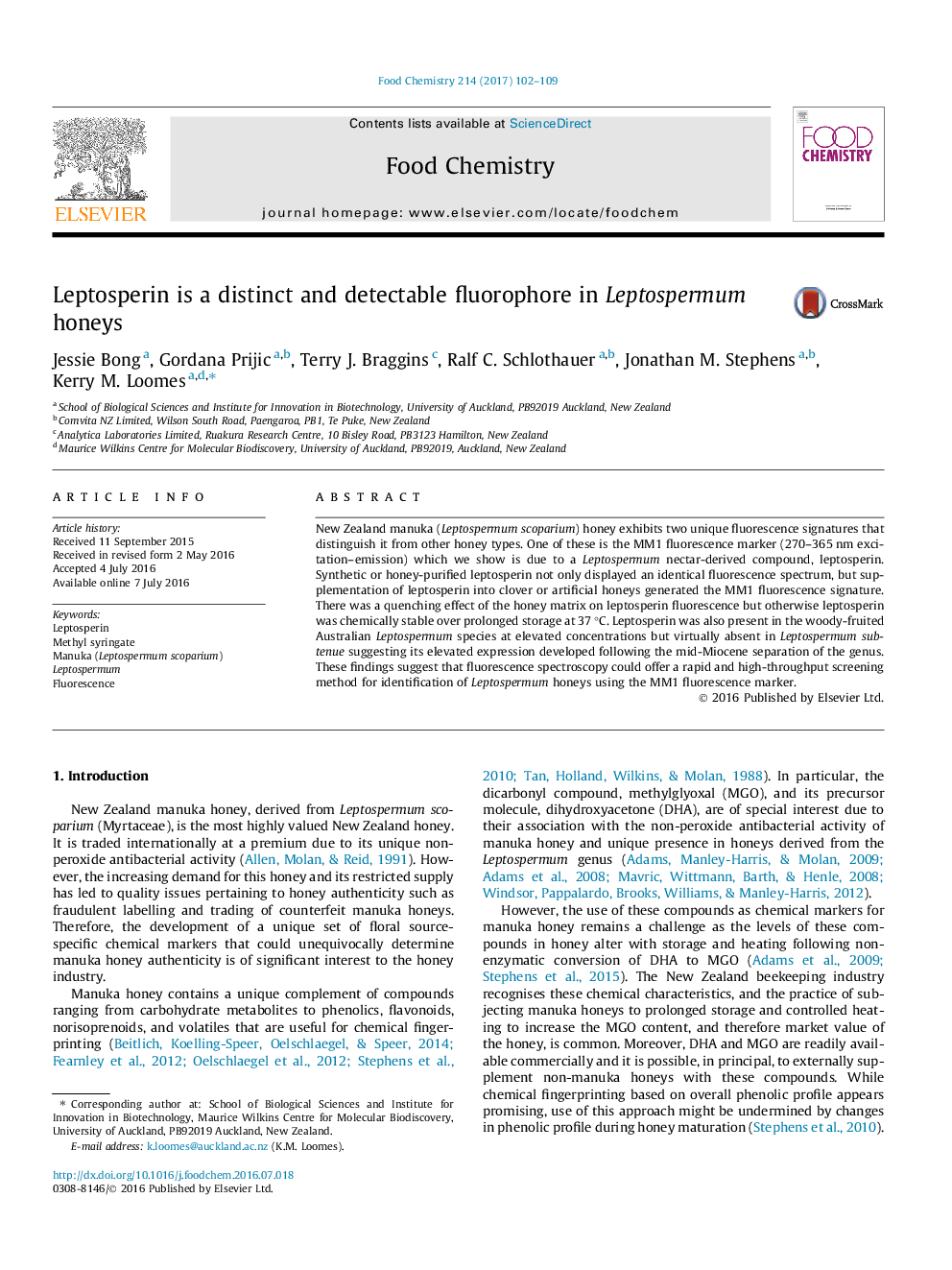| Article ID | Journal | Published Year | Pages | File Type |
|---|---|---|---|---|
| 7586968 | Food Chemistry | 2017 | 8 Pages |
Abstract
New Zealand manuka (Leptospermum scoparium) honey exhibits two unique fluorescence signatures that distinguish it from other honey types. One of these is the MM1 fluorescence marker (270-365 nm excitation-emission) which we show is due to a Leptospermum nectar-derived compound, leptosperin. Synthetic or honey-purified leptosperin not only displayed an identical fluorescence spectrum, but supplementation of leptosperin into clover or artificial honeys generated the MM1 fluorescence signature. There was a quenching effect of the honey matrix on leptosperin fluorescence but otherwise leptosperin was chemically stable over prolonged storage at 37 °C. Leptosperin was also present in the woody-fruited Australian Leptospermum species at elevated concentrations but virtually absent in Leptospermum subtenue suggesting its elevated expression developed following the mid-Miocene separation of the genus. These findings suggest that fluorescence spectroscopy could offer a rapid and high-throughput screening method for identification of Leptospermum honeys using the MM1 fluorescence marker.
Related Topics
Physical Sciences and Engineering
Chemistry
Analytical Chemistry
Authors
Jessie Bong, Gordana Prijic, Terry J. Braggins, Ralf C. Schlothauer, Jonathan M. Stephens, Kerry M. Loomes,
